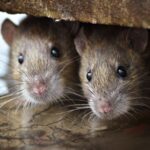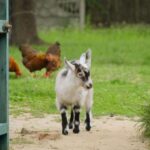You’re probably aware that backyard chickens need grit in their diets. In fact, they need two types of grit for optimal health;
Insoluble or flint grit - Chickens need insoluble grit to help them digest their food. They don’t have teeth to break up food, instead, once in their gizzard, they grind up food with the help of grit.
Soluble or oyster shell grit - Chickens also need calcium supplemented grit if they’re laying eggs. Eggshells are made mostly from calcium, so they need to ingest calcium to keep producing strong shells.
There are a few ways you can give grit to your flock. Should you mix grit with their chicken feed? Mixing grit in with your chicken’s food is one way to ensure they’re getting enough in their diet. You can also use a separate grit feeder or scatter it on the floor.
Table of Contents
Why Do Chickens Need Grit With Their Food?

As mentioned above, chickens need to eat grit to help them grind up their food for digestion. Chickens have a very different digestive system to us, the way they digest their food is quite interesting,
When a chicken first swallows food, they store it in their crop. When the food is ready to be processed, it passes into their glandular stomach, and finally into their gizzard.
The gizzard is where a chicken “chews” its food. It does this by contracting and grinding up the food with the help of the grit they’ve swallowed.
How Should You Feed Grit to Chickens?
There are three main ways you can provide grit for your chickens to eat:
Scattering It on the Floor
Chickens love to forage, it comes naturally to them. Some backyard flock owners like to give their chickens something to forage for, especially if they are kept in their coop and run most of the time.
If you scatter some grit in their run they’ll find it and eat it they feel the need. The downside is that it might get trodden into the ground and isn’t ideal in bad weather conditions.
Mix It in With Their Food
As I mentioned above, you can mix grit in with their layer feed or layers pellets. This practice is more common when supplementing a hen’s diet with a calcium-rich grit, like oyster or cockle shells, or limestone.
Laying hens need 4-5 grams of calcium a day in their diet to ensure they’re producing strong egg shells. There are some great formulated feeds that will provide this, but you can beat providing some additional calcium through grit too.
Make It Available in a Grit Feeder
For regular insoluble grit, most backyard chicken owners just keep a grit feeder topped up. A grit feeder is just a feeding container that keeps grit dry and at a convenient height for chickens to graze on.
Generally speaking, chickens are smart enough to know when they need to eat grit and will eat some when they need to. It’s a good idea to just put in enough though, you never know when a chicken is going to overdo it.
Can Chickens Eat Too Much Grit?

In a word - yes.
It’s unlikely a chicken will eat too much grit if made available, but it can happen. Some breeds are more susceptible to overeating than others, just as some breeds are more likely to suffer an impacted crop if they eat too much grit.
This is why a lot of owners opt to add some grit to their feed. At least this way they know how much they’re eating.
If your chickens have an open space to roam free-range, you need to be aware that they will be finding bits of grit while foraging too.
Some free-range chickens do not even need grit to supplement their diet. They find enough doing what chickens do best, foraging on the floor and finding what they need.
In Summary
Hopefully, this article has helped explain what types of grit chickens need, how they used grit to digest their food and produce lovely strong eggs, and how you can mix it in with their food.
If you add the recommended amount to their commercial feed, you can be pretty sure your flock is getting enough grit. Both to help their calcium intake and ensure they have a healthy digestive system.




